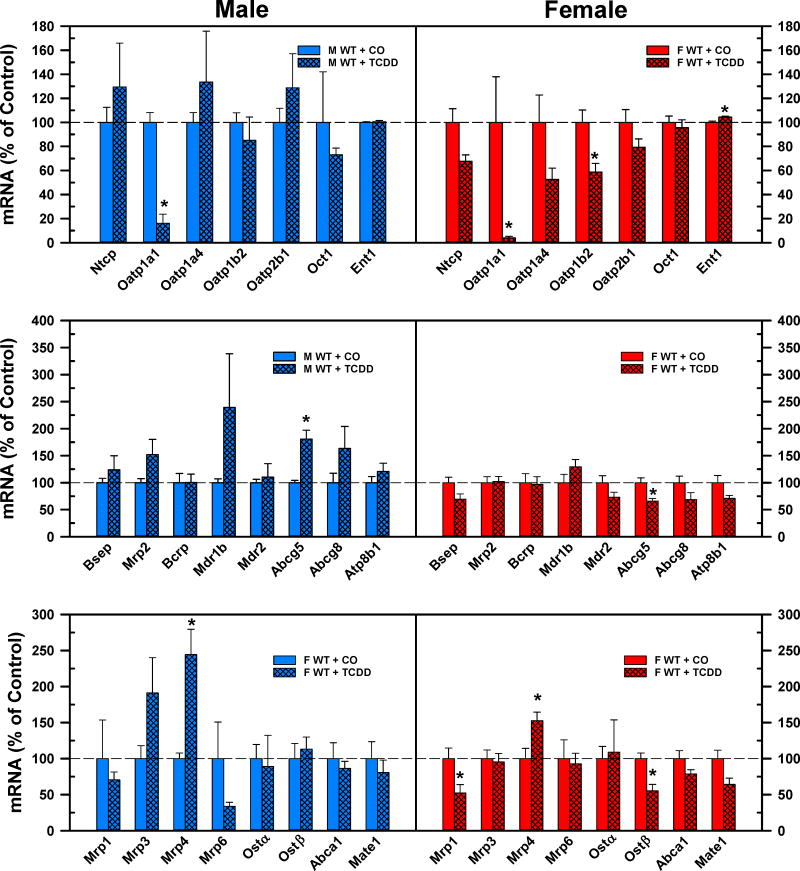Fig. 9.
Effect of TCDD on mRNA expression of basolateral uptake (top), canalicular (middle), and basolateral efflux (bottom) transporters in livers of WT male (blue bars) and female mice (red bars). Corn oil (vehicle) or TCDD (37 μg/kg) was administered daily (IP) for 4 days to male and female mice (at least 6 mice per treatment group). On the 5th day livers were harvested. Total RNA was analyzed by QuantiGene Plex 2.0 Assay, as well as by RT-qPCR. Bars represent the relative percentage mRNA expression ± SE of mice per group. Asterisks indicate significant difference (p < 0.05) from the respective value of the WT mice. Breast cancer resistance protein (Bcrp), Bile salt export pump (Bsep), Equilibrative nucleoside transporter (Ent), females (F), males (M), Multidrug and toxin extrusion transporter (Mate), Multidrug resistance protein (Mdr), Multidrug resistance-associated protein (Mrp), Na(+)-taurocholate cotransporting polypeptide (Ntcp), Organic anion transporting polypeptide (Oatp), Organic cation transporter (Oct), Organic solute transporter (Ost), 2,3,7,8-tetrachlorodibenzo-p-dioxin (TCDD), wild-type mice (WT). Color image is available in the online version of the article.

